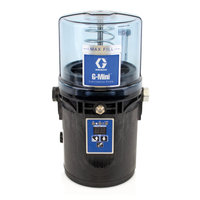Keep Your Fleet On The Road – And Out Of The Workshop
DISCOVER HOW MAINTAINING PROPER LUBRICATION IS THE KEY TO RUNNING A MORE EFFICIENT FLEET.
Irrespective of fleet size – and whether it’s a fleet of trucks or buses – every fleet manager is concerned with efficiency. How can I utilize my fleet as efficiently as possible? How do I maximize time on the road and minimize time in the workshop? How can I stretch service intervals while maintaining peak vehicle performance? How can I make my operations more efficient by lowering operational costs per kilometer?
The key to effective bus or truck fleet maintenance is correct lubrication. But this requires much more than arming a mechanic with a grease gun and pointing him in the direction of a vehicle. Manual lubrication leads to under- or over-greasing, and both can be equally harmful.
“The effects of under-lubrication are well-known: increased component wear, premature failure, higher energy usage, increased operating and maintenance costs,” says Charles Hartl, Global Product Marketing Manager, Lubrication Equipment Division, Graco. “But the effects of over-lubrication can be just as detrimental. It wastes lubricant, can lead to excess heat build-up, puts stress on lube points, and increases downtime. The solution is obvious: optimal lubrication.”
And that’s exactly where automatic lubrication comes in. By providing smaller amounts of lubricant at more frequent intervals, you avoid both under- and over-greasing. It can even be set up with features that detect a blocked or broken line and then alert the operator.

Benefits of automatic fleet lubrication solutions
Automatic lubrication is guaranteed to improve overall fleet efficiency because it has three main effects.
It increases vehicle uptime and profitability, ensuring that a fleet stays on the road making money instead of spending time in the workshop, losing money. And it cuts unplanned component failure and repair time.
It extends the lifetime of a vehicle and its components. Equipment runs smoother and lasts longer when properly and frequently lubricated. Automatic lubrication also eliminates a mechanic’s “best guess” as to the amount of lubrication necessary, and ensures that every lube point is lubricated. (Even the best trained mechanics can forget a lube point now and again!)
It saves time and lowers operating costs. Eliminating manual greasing reduces shop maintenance hours, avoids chassis lube scheduling hassles, and reduces replacement part and labor costs.
“All of these benefits convert to one big one: improved fleet efficiency, ensuring that trucks or buses are kept available for use 24 hours a day, 7 days a week,” adds Hartl.
Related Articles
Will an Automatic Grease System Work on My Vehicle?
No matter what shape, size or capacity, automatic lubrication will work for your commercial vehicle.
Snow Plow Keeps Moving with Graco Grease Jockey
A city in Minnesota uses auto lubrication for even the most extreme road conditions.
Understanding the Basics of Automatic Lubrication Systems
Discover what components make up an automatic lubrication system.










